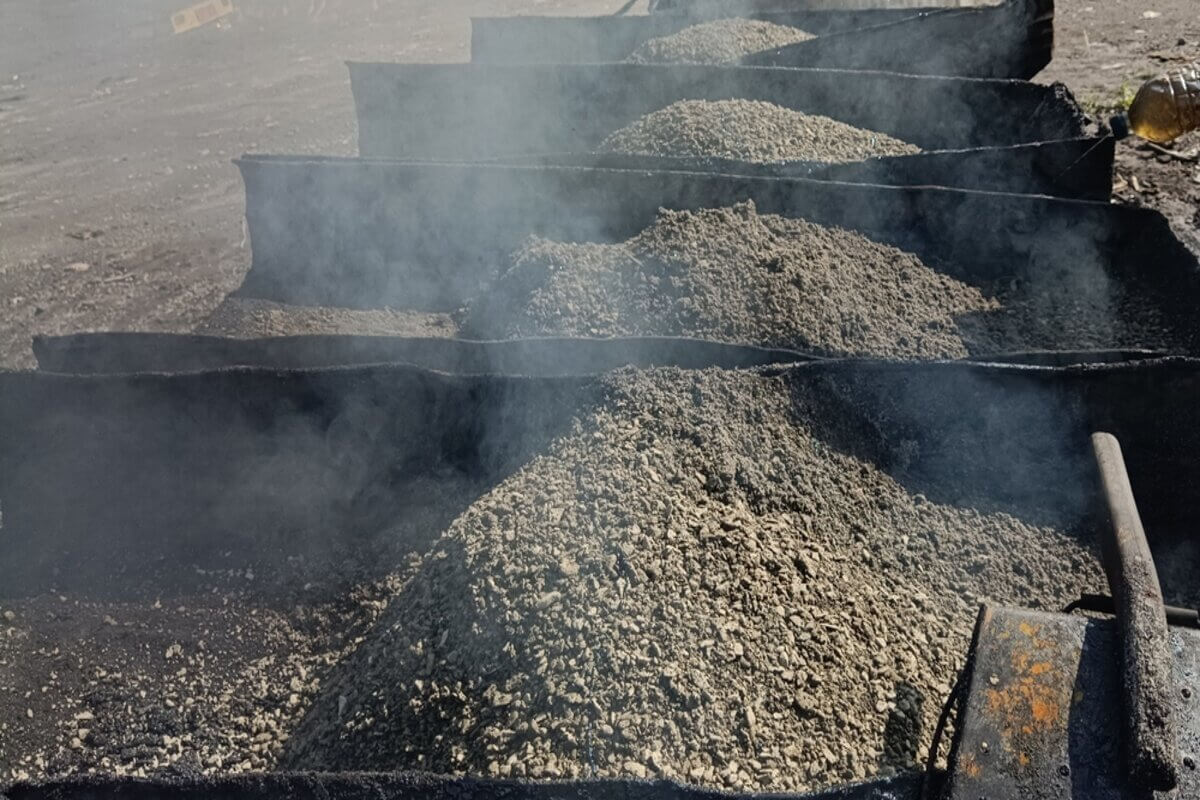Hot Mix Asphalt Paving: Elevating Commercial Parking Lot Standards
Hot Mix Asphalt Paving: Elevating Commercial Parking Lot Standards
Blog Article
Unlocking the Secrets of Hot Mix Asphalt Innovation
Checking out the midsts of warm mix asphalt innovation uncovers a globe where specific solutions and thorough procedures merge to shape our roadways and framework. The blend of binders, fillers, and aggregates isn't simply a building and construction job however a critical orchestration of durability and efficiency. As we peer right into the detailed dancing of components, a tapestry of strength and sustainability unravels. What lies beneath this surface of asphaltic proficiency, and what tricks wait to be revealed in the realm of leading advancements?
Significance of Warm Mix Asphalt
Warm Mix Asphalt plays a crucial role in contemporary facilities advancement due to its durability and cost-effectiveness. As the most commonly used paving material for roads, highways, and vehicle parking great deals, Warm Mix Asphalt uses an array of advantages that add to its value in building and construction tasks.
The durability of Warm Mix Asphalt originates from its make-up, which consists of accumulations, binder, and filler products that are meticulously picked and blended to satisfy particular performance requirements. This precise combination causes a solid and versatile pavement that can endure constant usage without considerable deterioration. Warm Mix Asphalt is 100% recyclable, additional enhancing its sustainability and ecological advantages. In general, the importance of Warm Mix Asphalt in framework growth can not be downplayed, as it continues to be a cornerstone of modern-day building practices.
Components of Asphalt Mixes
The composition of asphalt mixes consists of meticulously selected aggregates, binder, and filler materials that are vital for achieving particular performance needs. Accumulations are the key component of asphalt mixes, offering stamina and security. The binder, commonly bitumen or asphalt cement, holds the aggregates together and offers versatility and toughness to the mix.
The mix and percentage of these parts play a substantial duty in determining the quality and performance of the asphalt mix. Engineers thoroughly develop the mix to satisfy certain needs, taking into consideration variables like website traffic quantity, environment problems, and sidewalk life expectancy. Appropriate selection and balancing of accumulations, binder, and fillers are essential for developing sturdy, durable asphalt sidewalks.
Combining and Manufacturing Methods

Once the aggregates are selected, the binder, frequently asphalt cement, is included in bind the materials together. The binder's quality and quantity considerably impact the mix's resistance, toughness, and adaptability to environmental elements. Additionally, fillers like hydrated lime or Rose city concrete may be incorporated to enhance details features of the asphalt mix, such as its workability or dampness resistance.
Throughout production, the aggregates and binder are warmed, commonly in between 250-325 ° F(121-163 ° C ), to assist in mixing and ensure correct finish of the aggregates. The mixing process has to be thorough to achieve a homogeneous mix that promotes the wanted efficiency characteristics of the asphalt. Various strategies, such as batch mixing or drum blending, are employed to attain top quality and regular asphalt mixes for construction jobs.
Elements Influencing Asphalt Performance
Factors affecting asphalt performance encompass a series of variables that affect the durability, long life, and overall top quality of asphalt pavements. One crucial factor is the high quality of materials utilized in the click to investigate asphalt mix. The kind and source of accumulations, the binder quality, and the ingredients all play a significant function in establishing the performance of the asphalt sidewalk. The rank of aggregates is critical as it affects the mix's workability, resistance, and stability to rutting and cracking.

Design considerations, such as sidewalk density and water drainage, are important in making certain the long-term performance of the asphalt pavement. By very carefully taking into consideration anonymous these service providers, factors and engineers can maximize asphalt efficiency and boost the solution life of sidewalks.
Lasting Practices in Asphalt Modern Technology
In addition, the development of warm-mix asphalt (WMA) modern technologies has actually acquired traction over the last few years. WMA allows for the manufacturing and placement of asphalt blends at reduced temperature levels compared to typical hot-mix asphalt, resulting in reduced power consumption and greenhouse gas discharges. The use of permeable asphalt mixes can aid reduce stormwater runoff problems by allowing water to penetrate through the sidewalk and into the ground, advertising natural water filtration and reenergize processes. By applying these sustainable techniques, the asphalt industry can add to building an extra durable and environmentally pleasant framework network.
Conclusion
To conclude, hot mix asphalt innovation plays an essential function in contemporary facilities advancement as a result of its durability and cost-effectiveness. By very carefully stabilizing elements, utilizing appropriate blending methods, and thinking about different variables, designers can develop high-quality asphalt mixes that withstand rush hour loads and harsh weather conditions. Embracing lasting techniques, such as making use of warm-mix modern technologies and recycled products, better boosts the ecological kindness of look here asphalt innovation.
Blending and manufacturing strategies in warm mix asphalt innovation involve the accurate mix and processing of aggregates, binder, and fillers to create a resilient and high-performance asphalt mix.Elements influencing asphalt performance incorporate a range of variables that impact the resilience, longevity, and total quality of asphalt pavements. Lasting techniques in asphalt technology encompass different initiatives intended at minimizing the environmental impact of asphalt production and paving processes. By incorporating recovered asphalt pavement (RAP) and recycled asphalt tiles (RAS) into brand-new asphalt mixes, the sector can substantially reduce the intake of raw materials and power, while also reducing landfill waste.
WMA enables for the production and placement of asphalt blends at lower temperature levels compared to standard hot-mix asphalt, resulting in reduced energy intake and greenhouse gas emissions.
Report this page